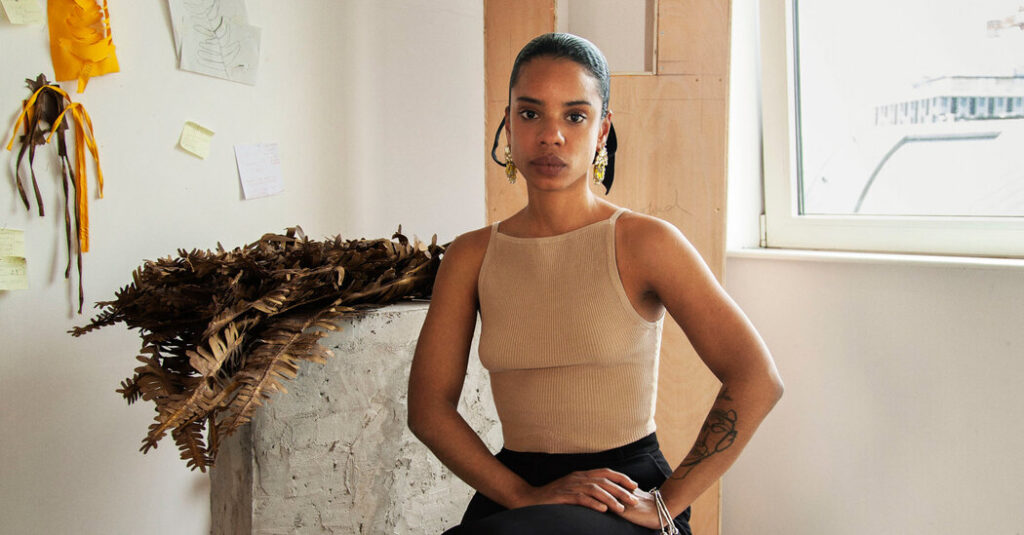In Solo Show, a new series from T Magazine, we ask Black artists to curate a list of three treasured works that they’ve encountered or made, and to reflect on how their practice connects to a broader art lineage.
Born in Lisbon and raised in Luanda, Angola, the interdisciplinary artist Sandra Poulson makes sculptures and installations that untangle the ongoing effects of neocolonialism. Poulson studied fashion design in Portugal and Britain, and originally considered herself a fashion “practitioner,” as she puts it. Now the artist — who was born in 1995, 20 years after Angolan independence — incorporates bright, monochromatic garments as well as concrete, soap, dust and wood into her works, carefully sourcing materials that are connected to everyday life in the country. This week, her first museum exhibition will open at MoMA PS1 in Long Island City, Queens, featuring a new installation of appropriated furniture and wood that alludes to the circulation of raw goods between Angola, the Netherlands and the rest of the world. Here, she discusses three artworks that are meaningful to her.
The first work that inspired her
Louise Bourgeois’s “Legs” (2001)
The first time I saw this piece was in an “Artist Rooms” exhibition at Tate Modern in 2016, when I first moved to London. It’s probably the first fabric-based work I’d seen that I didn’t consider textile art. I knew it was sculpture, and the seriousness it commanded was something I aspired to. At the time, I was making drawings and mixed-media work, and I was being trained to master fabric at London College of Fashion and Central Saint Martins. Seeing [“Legs” and other fabric pieces in that exhibition], I realized that making a sculpture didn’t necessarily mean I had to work with plaster, steel or wood. This was revolutionary for me.
A work she returns to again and again
Nástio Mosquito’s “Demo da Cracía” (2013)
The Angolan artist Nástio Mosquito’s performance and video art has a humor that comes naturally to a society dealing with its own ghosts. [The Angolan civil war, fought between Communist and anti-Communist groups, lasted from the country’s independence in 1975 until 2002.] “Demo da Cracía” is satire and social commentary, and I can recognize even the smallest [Angolan pop-cultural] references in the video. That feeling of immediate recognition has stayed with me, [as has the artist’s] ability to speak about very serious subjects in an accessible way.
A new work of her own that she’s excited about
“Cabinda Dreams” (2025)
I bought this headboard from a couple of U.S. diplomats in the Netherlands who told me it was a solid wood American bed. As soon as I got to the studio and started drilling into it, I realized it was made of veneered plywood, chipboard and MDF [medium-density fiberboard] produced in China. It was hollow! I felt ripped off. This unsolid headboard seemed like the perfect [backdrop] for the European Union logo, the same logo that’s on propagandistic merchandise, like stickers and polo shirts, that are widely distributed in Cabinda, a coastal Angolan territory. In 1956, an American company discovered oil off the shore of Cabinda and, until 1975, Portugal sold that oil to fund the prevention of Angolan independence. I’m interested in how the European Union’s symbolic presence [in this former colony] relates to its true economic interests.
This interview has been edited and condensed.


